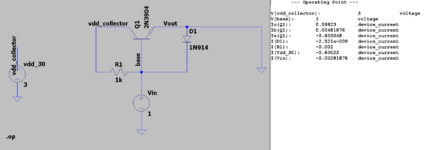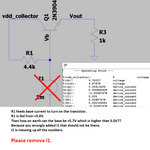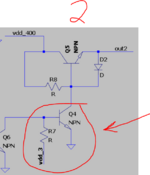yefj
Advanced Member level 5

- Joined
- Sep 12, 2019
- Messages
- 1,548
- Helped
- 1
- Reputation
- 2
- Reaction score
- 5
- Trophy points
- 38
- Activity points
- 9,328
Hello,there is an intresting structure shown bellow, i can that there is a form of switch being used.
from mosfet i know that Vgate above Vt opens the transistor.
But here the bjt's are in weird forms .
how can i interpret the logic of this circuit?
Thanks.

from mosfet i know that Vgate above Vt opens the transistor.
But here the bjt's are in weird forms .
how can i interpret the logic of this circuit?
Thanks.




